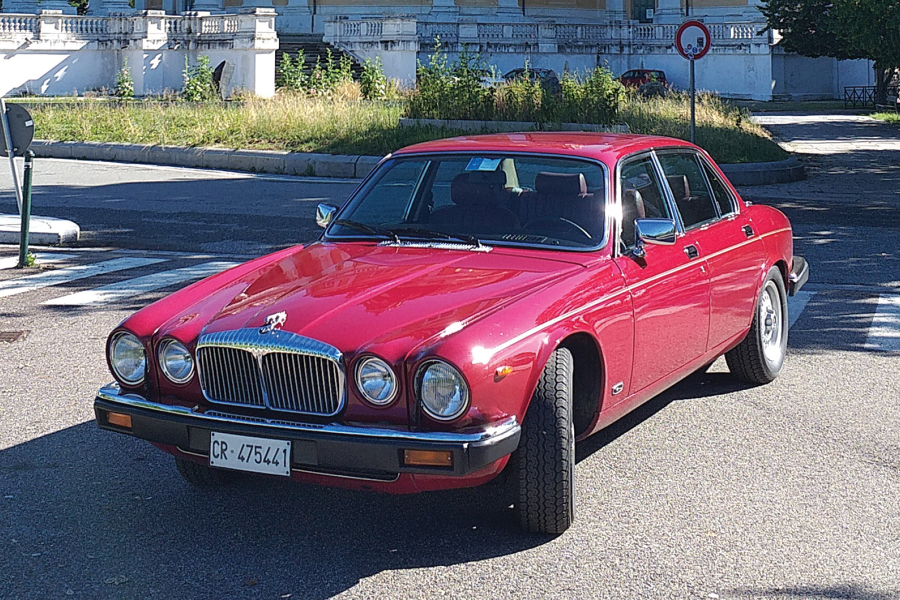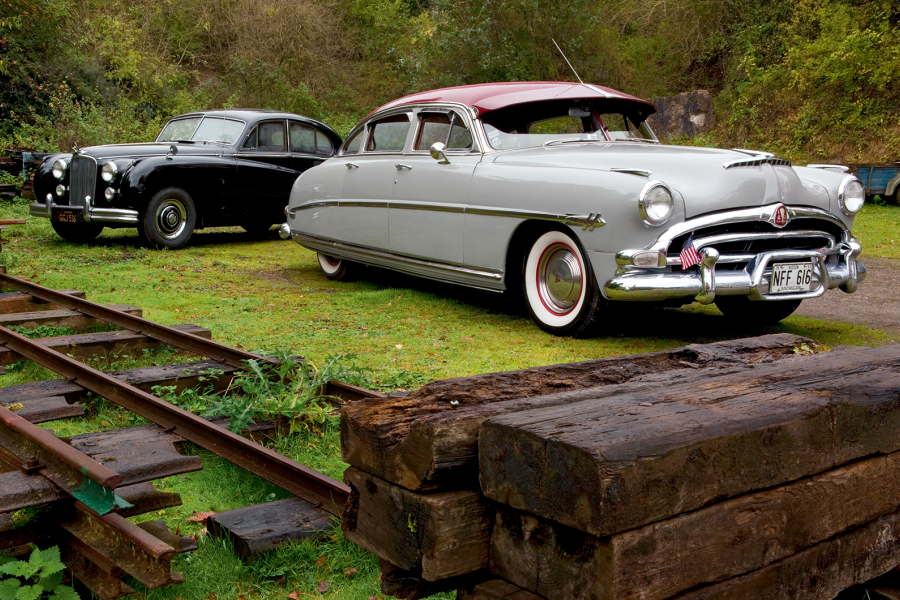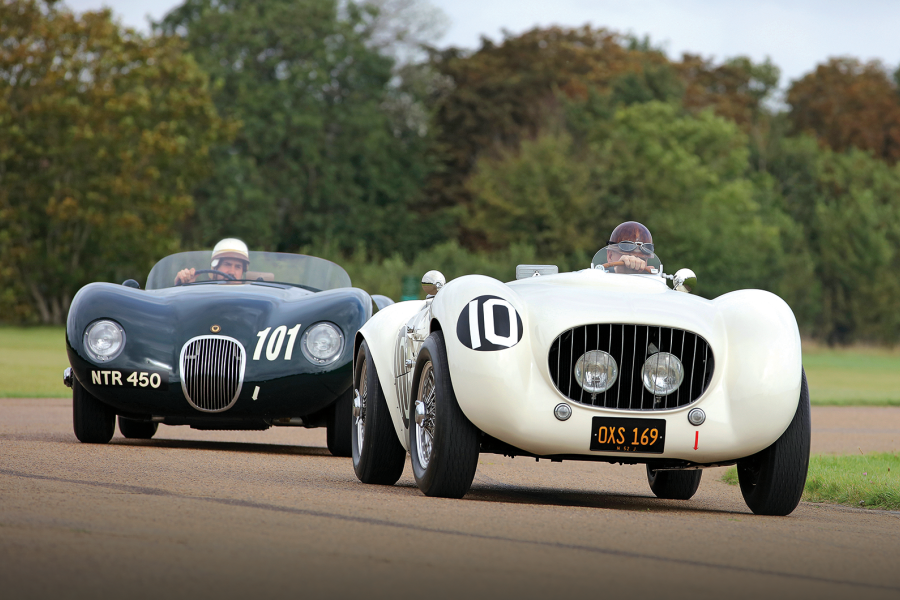During that season he suffered a huge crash during a Castle Combe test day when the car jumped out of gear in a fast corner.
He was briefly knocked out in the impact, and when he regained consciousness he looked down and wondered why the windscreen was in his lap.
Although the car was rebuilt, he found himself well off the pace.
The Ford Galaxie’s iron-fist V8 drops into the velvet-glove classic Jaguar E-type to create something truly special
Brookes recalls him standing in the kitchen of the family home and saying that he’d lost his nerve following the shunt: “I think he went a little bit quiet over it because his mother – my grandmother – was still alive.
“My mother and grandmother would not have been particularly happy with him risking his life in the Egal.
“He gradually gave up racing after that.”
Much of the Egal’s bodywork is bespoke
During 1966, the car was raced by Chris Summers, although there were still occasional outings for Beck and Richardson.
Both men drove it at that year’s Brighton Speed Trials, Beck proving that his nerve hadn’t completely deserted him with second in class and crossing the finish line at 146mph.
In 1967, Richardson recruited a new driver: Barrie Williams. ‘Whizzo’ raced everywhere from Shelsley Walsh and Long Marston to Silverstone, describing it as being: “Horrendous to drive, with way too much power and no grip.
“It ran out of brakes, too. The thing is, it was so quick to the first corner that I won a lot of races.”
The Egal E-type’s enormous side-exit exhausts were added during an American rebuild
Richardson and Beck sold the Egal in the late 1960s.
Subsequent owners included Dennis Macfarlane and Loch Lomond-based Bob Kerr, before it was acquired by Tom McCallum in the mid-’70s.
As a youngster, McCallum had his imagination fired by watching Dennis Poore in the ex-Hans Ruesch Alfa Romeo 8C-35 at Bo’ness, and even saw his hero Fangio winning the 1954 Swiss GP; he’s never forgotten the sound of the Mercedes W196’s straight-eight echoing through the forests of the Bremgarten circuit.
The Egal E-type’s builders, Richardson (right) and Beck (behind, hands crossed), with their new creation at Weston-super-Mare in ’64 © Tom McCallum Collection
McCallum had plenty of experience with Jaguars, having competed in a modified XK120 and the ex-John Burbidge Modsports E-type.
“I thoroughly enjoyed that E-type,” he recalls, “but then Bob Kerr had this thing called the Egal, which I read up about.
We decided that they were about the same value, so I drove up from Buckinghamshire to Doune hillclimb near Stirling and we swapped cars in the paddock.
In those days, people weren’t worried about signing paperwork, and that was the start of it.
The air intakes aid cooling to the massive 8.5-litre V8
“I hillclimbed it at that meeting,” remembers McCallum.
“Doune is pretty fearsome anyway, but a car such as the Egal has a habit of ‘bringing the cheeks together’.
“You find that bits of track you previously thought were straight are actually not, but I think I won my class.
“A little later I entered it in a historic race at Ingliston.”
The Egal E-type is beautifully sorted for the road
“It was dry for practice and I was on pole, and second was Campbell McLaren in one of the ex-Briggs Cunningham Lightweight E-types [5114 WK]," he continues.
“Then there was Roddy MacPherson in a Cooper-Bristol – it was a mixture of sports cars and open-wheelers.
“It was damp when the race started, which didn’t really suit the Egal, so Roddy got past me and I finished second.
“We crossed the line almost together.”
A four-barrel Holley carburettor feeds the 8.5-litre Ford Galaxie engine
By the time McCallum bought the car, it had been repainted navy blue but was still wearing the JA Pearce wheels that ‘Whizzo’ remembered being fitted in place of the previous Borrani wires.
Those in turn had replaced the original Jaguar wires as Beck and Richardson gradually developed the Egal during the mid-1960s.
“I had hand-cut Dunlop slicks on it to try to get some bloody grip,” recalls McCallum.
“Also, because the wide alloys were quite low, I had skid plates welded underneath so that when you took off on a hillclimb, you didn’t remove the exhausts – you just left a trail of sparks!”
The Sussex countryside reverberated to the sound of the Egal’s ear-splitting V8
“It was immense fun,” reminisces McCallum
“The Burbidge E-type was a very quick car, but not as quick as the Egal. The torque was amazing.
“It was just a joy: I’ve always loved hairy, untidy motor cars. I was never a neat driver…”
In 1980, McCallum got a call from Steve Morse, who ran British Car Parts in Los Angeles. He got straight to the point, and said that he wanted to buy the Egal.
Despite appearances, the Egal E-type is relatively user-friendly
“I thought of what Bob and I had valued it at,” recalls McCallum, “then doubled it, and he didn’t miss a beat.”
“So, stupidly, with an expensive mortgage and two young kids, I sold it. Morse must have kept it for 25 years.”
The Egal passed to another American owner and stayed in the US until a British-based Jaguar enthusiast heard about it and asked marque expert Chris Keith-Lucas if he’d fly over and check it out.
The Egal’s current alloys were fitted during its most recent restoration
The car had recently been restored, and neither ‘Whizzo’ nor McCallum was hugely impressed with the result.
It certainly didn’t bear much relation to how it had looked during any stage of the Beck/Richardson era, and initially Keith-Lucas had various concerns.
Among those was the fact that, when he first saw the car, its air intake was far more rectangular than the usual E-type oval visible in early images of the Egal, and he thought perhaps the bonnet had been replaced.
Then he found some more period photos and noticed that the air intake had actually been reshaped as early as 1968, most likely as a result of some front-end damage.
The Egal E-type is addictively fast on the road, but it would require a large airfield to truly exploit its massive power output
Keith-Lucas was delighted to discover that the deeper he delved, the more originality he found.
Alongside the Americans’ immaculate MIG welding, for example, were signs of Richardson’s 1960s gas welding.
The body and front subframe were correct and, when he looked underneath, he could see the brackets for the various gearboxes that Beck and Richardson had tried.
The Egal’s aesthetics have been tweaked by its various owners
Beneath the cosmetic excesses of its recent rebuild, the Egal was alive and well.
With Keith-Lucas satisfied, it changed hands and returned to England.
Given Beck’s links to Shelsley Walsh, and the fact that it was built just down the road, it was fitting that the Egal stole the show at the E-type Club’s 60th-anniversary celebrations last summer.
The many stories associated with this classic Jaguar contribute to its rich history
Long-term, the plan is to return it to ’60s specification, and numerous people have come forward to share their stories.
The interest generated has been huge, which should come as no surprise.
Seeing and hearing the Egal is an unforgettable experience.
Images: Luc Lacey, Tom McCallum Collection, Paul Lawrence
Thanks to: Chris Keith-Lucas and James Fraser, CKL Developments; Alan Brookes; Tom McCallum; Pete Stowe
READ MORE
Jaguar E-type: a quest for perfection
The civil English war: Aston DB6 vs Jaguar E-type
Unique Bentley T-type Special: Crewe cut
James Page
James Page is a regular contributor to – and former Editor of – Classic & Sports Car



































